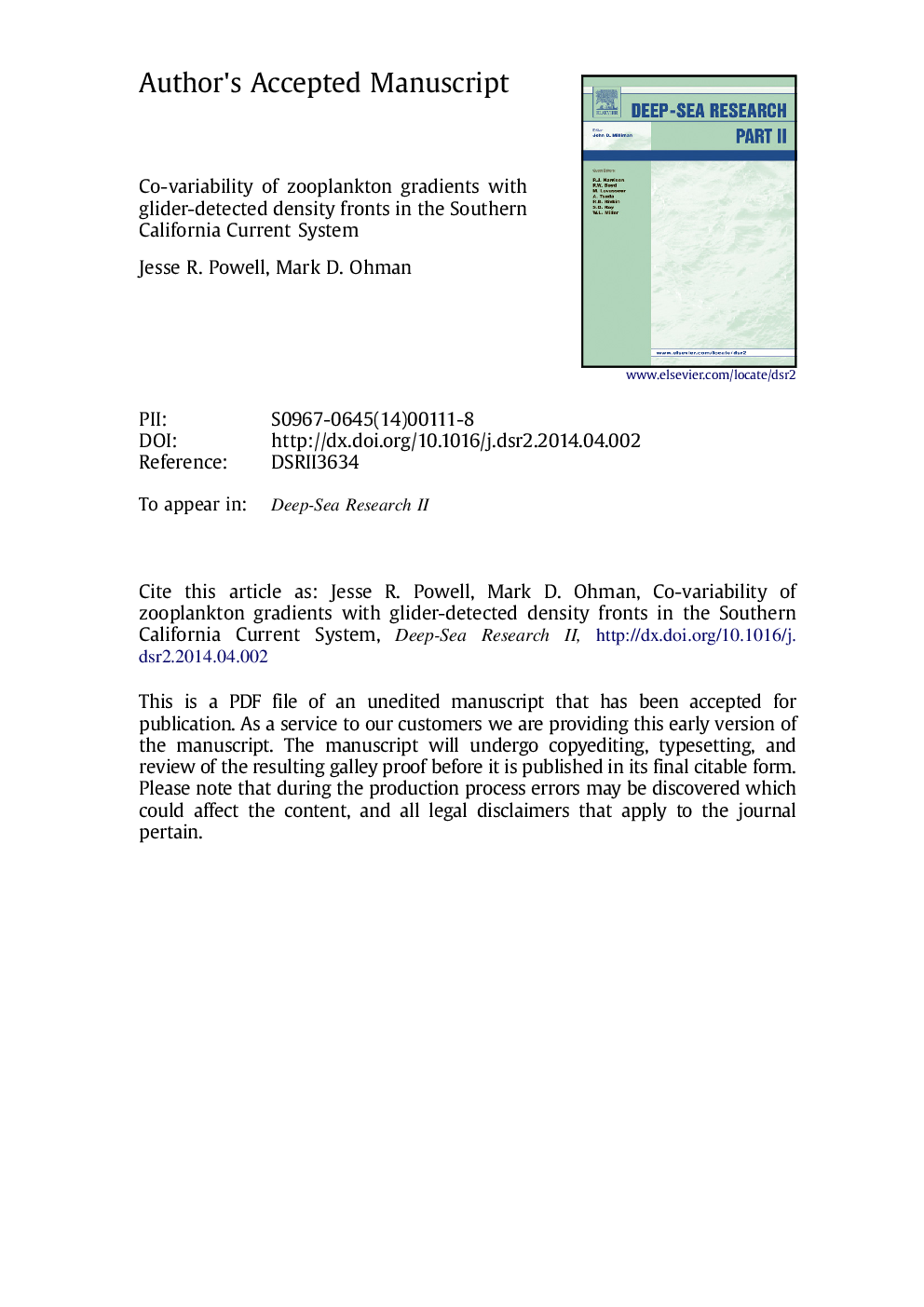| کد مقاله | کد نشریه | سال انتشار | مقاله انگلیسی | نسخه تمام متن |
|---|---|---|---|---|
| 6384070 | 1626428 | 2015 | 52 صفحه PDF | دانلود رایگان |
عنوان انگلیسی مقاله ISI
Covariability of zooplankton gradients with glider-detected density fronts in the Southern California Current System
دانلود مقاله + سفارش ترجمه
دانلود مقاله ISI انگلیسی
رایگان برای ایرانیان
کلمات کلیدی
موضوعات مرتبط
مهندسی و علوم پایه
علوم زمین و سیارات
زمین شناسی
پیش نمایش صفحه اول مقاله

چکیده انگلیسی
Fronts represent sharp boundaries between water masses, but seasonal and interannual variation in their occurrence and effects on the distributions of pelagic organisms are poorly understood. This study reports results from six years of ocean front observations (2006-2011) along two transect lines across the Southern California Current System (SCCS) using autonomous Spray ocean gliders. During this time, 154 positive near-surface density fronts were identified within 124 completed transects consisting of nearly 23,000 vertical profiles. The incidence of surface density fronts showed distinct seasonality along line 80 off Pt. Conception, with fewer fronts occurring during winter months and more numerous fronts in the nearshore and during spring, summer and fall. On line 90, fronts were the least common nearshore and most frequent in a transitional region offshore. Horizontal density gradients in the surface layer (0-50Â m) were significantly correlated with horizontal gradients in surface layer Chlorophyll-a (Chl-a) fluorescence, as well as with mean volume backscatter (MVBS) recorded by a 750Â kHz acoustic Doppler profiler. Density fronts were not only zones of rapidly changing phytoplankton and zooplankton biomass concentrations, but also more likely to be zones of enhanced acoustic backscatter and Chl-a fluorescence than regions flanking the fronts. MVBS and Chl-a gradients were significantly correlated with gradients in other hydrographic variables such as temperature, salinity, and spiciness, and weakly with cross-track current velocity, though density gradients remained the single best predictor of strong MVBS and fluorescence gradients. Large mobile predators foraging in the vicinity of such features could locate habitat with higher zooplankton biomass concentrations up to 85% of the time by traveling up local density gradients (i.e., toward rather than away from denser surface waters). We discuss implications of these results in the context of long-term trends in ocean fronts in the SCCS.
ناشر
Database: Elsevier - ScienceDirect (ساینس دایرکت)
Journal: Deep Sea Research Part II: Topical Studies in Oceanography - Volume 112, February 2015, Pages 79-90
Journal: Deep Sea Research Part II: Topical Studies in Oceanography - Volume 112, February 2015, Pages 79-90
نویسندگان
Jesse R. Powell, Mark D. Ohman,